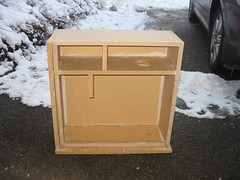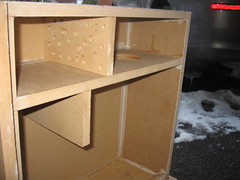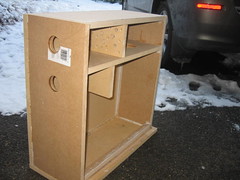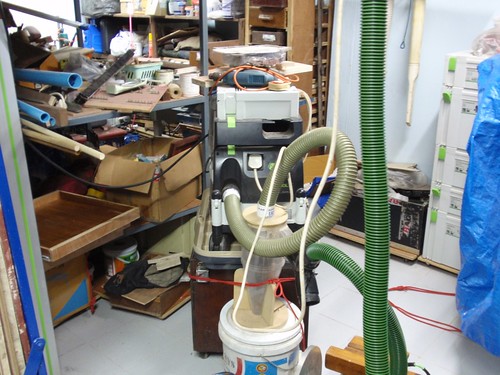Mike.C":2b0clsrk said:
Dave many thanks for taking the time to reply it is very much appreciated. I have done some testing and there is a definite drop in suction when all three are running.
The trouble is I do not understand the power readings that the manufacturers give, and what to look for in an extractor to run the complete system. I am ok making a drop box, but it is going to be of no use if I cannot decide or get recommendations if the above extractors are any good, or if I should sell all three and buy one machine that will run the system in my size of workshop.

It is very frustrating to know that the knowledge is out there but I cannot obtain it. Especially when dust extraction is a pet hate of mine.
Again with reference to the link above I do not even know if the blast gates I have are any good, because just pulling them shut and tightening a bolt in my mind does not seem good enough, and although I cannot feel or hear any air escaping past them, I would have thought that they would need a rubber type gasket to seal the system properly. But there again I do not know much about the workings of dust extractors and all the parts that go into making a system to really know if I am right or not.
Cheers
Mike
Cheers
Mike
Hi Mike,
I agree looking at extractors is confusing. From my own boggy tread through the specs I think there are too broad types:
Chip Extractors - lots of volume - however, they are not good on small diameter pipes - like extracting off a sander.
Higher pressure, lower volume ones (More like shop vacs or the record power RSDE1s etc) They can stand smaller pipes and still maintain their suction. They also usually filter down to much smaller sizes as they are intended more for dust.
The difference is down to the type of impellor used to generate the flow and their ability to pull down (ie higher vacuum) on the system.
So, I think you have to make a choice, chips or dust. Then from that work out what flow rate you need. I find that my 1kW (53l/s) RSDE1 is okay for most stuff, however, for the table saw I wish I had the too motor version to give twice the suck. I think if you try to visual how much air it is shifting per second it gives you a good idea of what is going on. The other thing you can look at is the flow speed. If you look on page one you can work out an approximate flow speed at your ports and visualise how well that will be able to "fight" the speed of the particles ejected by the machine.
I hope this sort of makes sense? I have noticed some manufacturers do recommend flow rates for equipment so it might be useful looking for that.
The other choice comes down to motor type and noise (after the particle size you are targeting)
Regarding your blast gates - I think they are okay as if there is any small gaps the system tends to pull them tight. To test them out put a thin plastic bag over the end to try to seal it, then see if it gets sucked in.
The other thing to try is to shut all the gates and listen to your extractor. If it sucks the system down and goes mad they are sealing. At this point if one is leaking it is likely to be whistling and will also try to pull the bag in more.
Cheers
David
PS What extractors are you using and what is your biggest dust producer in the workshop?










































